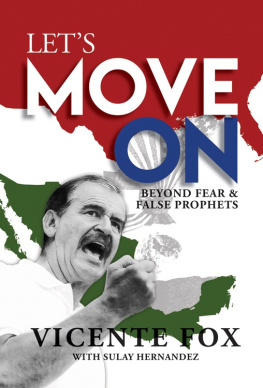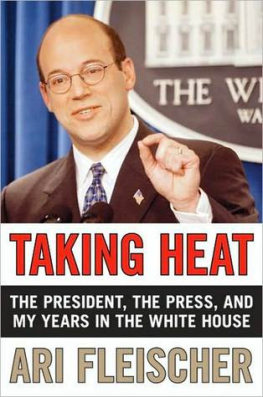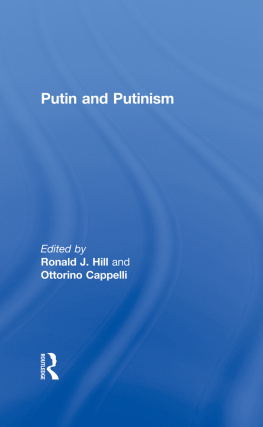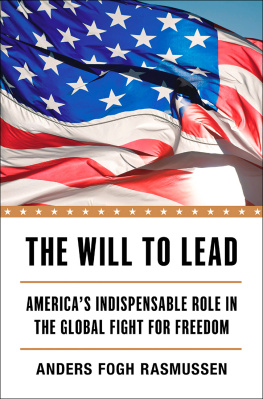REVOLUTION OF HOPE
VICENTE FOX
AND ROB ALLYN
VIKING
VIKING
Published by the Penguin Group
Penguin Group (USA) Inc., 375 Hudson Street, New York, New York 10014, U.S.A. Penguin Group (Canada), 90 Eglinton Avenue East, Suite 700, Toronto, Ontario, Canada M4P 2Y3 (a division of Pearson Penguin Canada Inc.) Penguin Books Ltd, 80 Strand, London WC2R 0RL, England Penguin Ireland, 25 St. Stephens Green, Dublin 2, Ireland (a division of Penguin Books Ltd) Penguin Books Australia Ltd, 250 Camberwell Road, Camberwell, Victoria 3124, Australia (a division of Pearson Australia Group Pty Ltd) Penguin Books India Pvt Ltd, 11 Community Centre, Panchsheel Park, New Delhi110 017, India Penguin Group (NZ), 67 Apollo Drive, Rosedale, North Shore 0745, Auckland, New Zealand (a division of Pearson New Zealand Ltd.) Penguin Books (South Africa) (Pty) Ltd, 24 Sturdee Avenue, Rosebank, Johannesburg 2196, South Africa
Penguin Books Ltd, Registered Offices: 80 Strand, London WC2R 0RL, England
First published in 2007 by Viking Penguin, a member of Penguin Group (USA) Inc.
Copyright Vicente Fox, 2007
All rights reserved
LIBRARY OF CONGRESS CATALOGING IN PUBLICATION DATA
Fox Quesada, Vicente.
Revolution of hope: the life, faith, and dreams of a Mexican president / Vicente Fox and Rob Allyn.
p. cm.
Includes bibliographical references and index.
ISBN: 978-1-1012-1385-8
1. Fox Quesada, Vicente. 2. PresidentsMexicoBiography. I. Allyn, Rob. II. Title.
F1236.9.F69A3 2007
972.08'41092dc22 2007021284
[B]
Without limiting the rights under copyright reserved above, no part of this publication may be reproduced, stored in or introduced into a retrieval system, or transmitted, in any form or by any means (electronic, mechanical, photocopying, recording or otherwise), without the prior written permission of both the copyright owner and the above publisher of this book.
The scanning, uploading, and distribution of this book via the Internet or via any other means without the permission of the publisher is illegal and punishable by law. Please purchase only authorized electronic editions and do not participate in or encourage electronic piracy of copyrightable materials. Your support of the authors rights is appreciated.
To the people of Mexico, with love
INTRODUCTION
THE YEAR OF HIDALGO
Rancho San Cristbal
December 4, 2006
I N L ATIN A MERICA , presidents generally do not retire to the farm to write their memoirs. Most flee abroad, to escape extradition. More than one has lived in house arrest.
Former chief executives of Mexico did not build presidential libraries, crusade against hunger, or run the United Nations. They generally caught the first plane to Europe, turning over power to a designated successor by pointing the dedazo, the finger. The traditional cycle of our six-year presidential term, the sexenio, worked like this: A president used his first five years to spend the nation deep into debt. In his sixth year, known as the Year of Hidalgo, he cut off the flow of money to the economy and diverted hundreds of millions of dollars from Mexicos oil revenues to fund the campaign of his successor. Then the incumbent handed the sash to the man to whom hed given the finger and got the hell out of the country, before the economic crisis kicked in.
Memoirs would have been a bad idea. They might have been used as evidence.
With the advent of real democracy in Latin America, our part of the world is no longer the sole province of dictators, demagogues, and deadbeats. Now we have peacemakers like Nobel Prize winner Oscar Arias of Costa Rica; democratic socialists like Ricardo Lagos of Chile, Alejandro Toledo of Peru, and Fernando Henrique Cardoso of Brazil. My own predecessor, Ernesto Zedillo, who steered our countrys transition to democracy and now teaches at Yale, made a bit of history himself: a Mexican ex-president so honest that he actually needed to work for a living.
Typically, Mexicos former presidents exiled themselves to Ireland, drew on their Swiss bank accounts, and hid from the world in walled suburban villas. The presidential palace of Los Pinos used to be the place where you couldnt go home again: If a former Mexican chief of state went out to a taco stand in his native village, people would boo and hiss. Our leaders were famous for spending their last year in the presidential palace systematically looting the building, taking with them furniture, paintings, antiques, even doorknobs and light fixtures. Imagine the president in his imperial sash, sneaking down the gilt-railed staircase with a malachite bedside clock in one hand and a Flemish tapestry rolled under his arm, like a hotel guest ducking the bill while stealing the shampoo bottles.
A Mexican presidents final year in office is called the Year of Hidalgo to honor Miguel Hidalgo, the great priest who fought for Mexicos independence from Spain. But a century and a half of authoritarian rule turned the sixth year of our presidents into a sad old joke: En el ao de Hidalgo, chingue a su madre, el que deje algo! This translates politely as, In the final year, the son of a bitch wont leave a thing!
T HREE DAYS AGO , at the stroke of midnight, I handed the green, red, and white presidential sash of Mexico to my successor, Felipe Caldern. A brilliant and courageous young reformer, President Caldern defeated a dangerous ally of Hugo Chvez named Andrs Manuel Lpez Obrador, known as AMLO, winning a razor-thin upset in the closest election in our nations history. The mood was tense. AMLO had held our nations capital hostage for months to defy the vote of the people in a contest hailed by international observers as one of the cleanest, fairest, and most accurate elections ever conducted in Latin America. The swearing-in of Felipe Caldern was a historic moment: the first time in Mexicos history that one freely elected president turned over power to another, officially bringing democracy to the land ruled for nearly a century by what Peruvian novelist Mario Vargas Llosa called the perfect dictatorship.
When I left Los Pinos, I took very little, determined to change Mexicos sexenio pattern of cronyism, corruption, and crisis. The first lady and I packed up my blue jeans and the vaquero belts with the big silver FOX buckle I wore on the campaign trail. We boxed them up with the proper suits and ties a president must wear to the United Nations, the White House, and the Vatican (in case anyone invites me back). For the mantel of my farmhouse, we brought a few photographs from my own inauguration day: Nelson Mandela and Lech Walesa, personal heroes of democracy; Bill Gates and Fidel Castro, two of the more fascinating dinner companions of a life in the global village; my daughter Paulina, holding aloft the banner of the Virgin of Guadalupe that caused such a stir in the secular world. For the presidential library that my first lady and I are building here at the ranch, I kept a copy of Mexicos first Freedom of Information Act; a thank-you note from a schoolboy in Chiapas, written on one of the computers that now connect every schoolhouse in Mexico to the Internet; a pottery bowl in vivid Mayan red and ocher, spun by the elderly hands of an indigenous woman in Chiapas with a loan from our microlending bank, inspired by Nobel Peace Prize winner Dr. Muhammad Yunus.
Then I went home to the farm of my immigrant forefathers, who came to Mexico from Ohio and Spain in search of their American dream, to tell you the story of mine.
I SIT HERE in the morning sun of our ranch near the exact geographic center of Mexico, literally confined to a rocking chair because I was struck by a bull last weekend; the doctors say the hairline fissure in my back will heal only if I stay very still.









